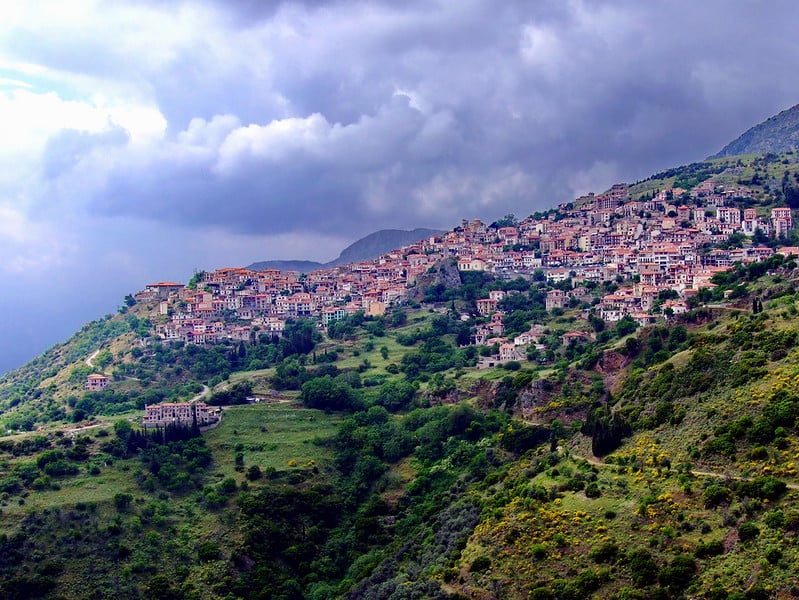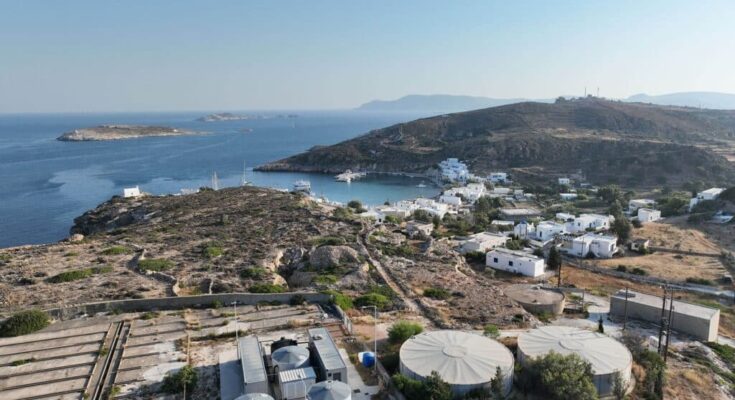
Greece is discussing the option of building huge desalination units near Athens to cope with the unprecedented drought affecting the country this year.
The water level at the Mornos Reservoir which supplies water to the city through a series of pipelines has dropped significantly. The reservoir, located 200 kilometers west of the capital, has seen a 30 percent drop in its water reserves compared to last year, according to figures from EYDAP, the Attica region’s water distribution company.
A submerged village, called Kallio, has partly re-emerged.
Greek authorities are examining various scenarios for dealing with the capital’s water supply problems in the event of prolonged drought, even though they claim the existing reserves in the reservoirs are sufficient for four more years.
Is desalination a solution to drought in Greece?
Discussions have begun with large electricity producers such as the Public Power Corporation (PPC) and the Mytileneos group for the construction and operation of up to four desalination units near Athens. Desalination requires a large consumption of electricity.
The one desalination unit, if the discussions with PPC proceed, could be constructed in the area of Lavrio, southeast of the Greek capital.
The rest of the units could be built around the Gulf of Corinth and along the water pipeline from Mornos to Athens.
Facing the risk of water scarcity, Greek authorities have asked the 3.7 million inhabitants of the Attica region, the area encircling Athens and home to a third of the Greek population, to closely monitor their water consumption.
No restrictions have been imposed, but there are daily appeals for moderation in the media and on social networks.
Costly solution
Experts however warn that the cost of water consumption from desalination is significant and reaches €1 per cubic meter, while is only 0.35 cents.
In any case, both solutions are relatively time-consuming and will take at least three years to work.
Officials say that the fastest and most advantageous solution at low cost is the transfer of water from the Kremasta Lake, the largest artificial lake in Greece.
The lake is located on the borders of Aetolia-Acarnania and Evrytania.
Drought in Greece Triggers Water Restrictions in Arachova

The drought that has been affecting Greek islands over the summer has already hit mainland Greece.
Arachova, the Greek winter capital, is facing a severe water shortage due to the draught that affects Greece, forcing authorities to close down the supply overnight.
Residents and visitors were left without water on Monday, October 28, 2024, from 1:00 am to 6:00 am. This was the second time in a week that authorities took the drastic action that local businesses fear could hurt the winter tourism season.
The local authority urged residents to “prudently use” water reserves.”
The cosmopolitan alpine town of Arachova is the perfect place to go to “see and be seen” during the winter season in Greece.
An easy two-hour drive from Athens, Arachova is often dubbed the “Winter Mykonos,” thanks to the wave of well-heeled Athenians who pass their weekends here from November onwards.



